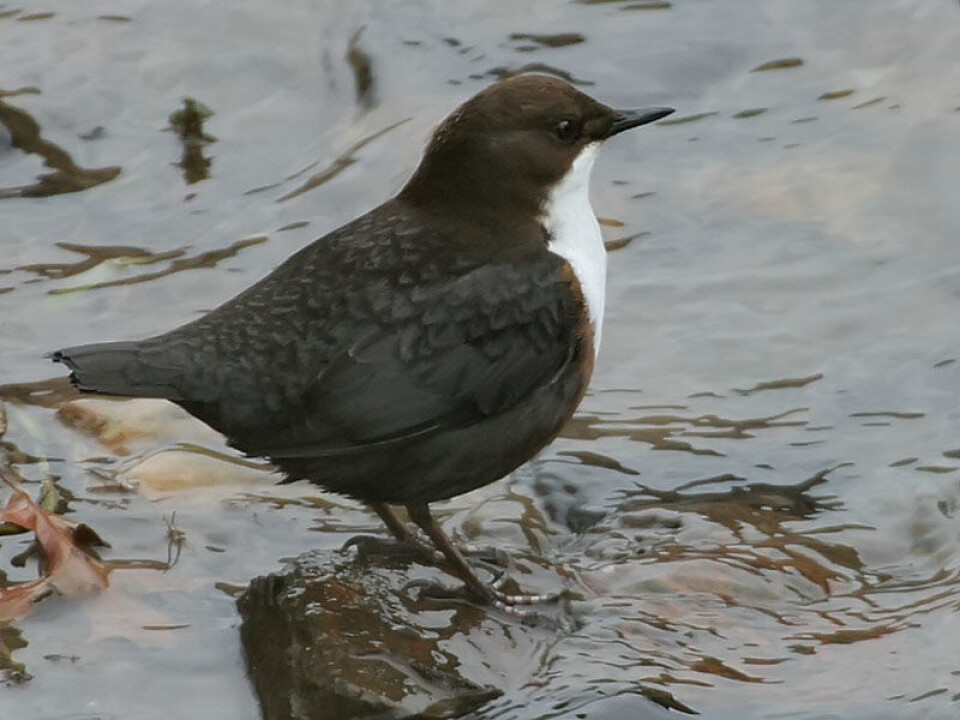An article from University of Oslo
Sperm cells compete in a never-ending race
Promiscuous bird species have less variation in their sperm cells. The explanation is the fierce competition that occurs between sperm cells when more than one male mates with the same female.
Denne artikkelen er over ti år gammel og kan inneholde utdatert informasjon.
Researchers at the Natural History Museum at the University of Oslo (UiO), Norway, were among the first in the world to start analysing sperm cells to learn more about bird evolution and behaviour.
“To understand sexual infidelity in species, interpreting DNA is not enough. We also need to look at the shape and behaviour of the sperm cells."
"Sperm research has opened up a completely new world to us,” says Professor Jan T. Lifjeld.
He is a behavioural ecologist, whose training at the Institute of Forensic Medicine included how to use DNA profiles to determine paternity.

One of the questions he is now asking himself is:
Does the female choose the male, or does the egg choose the sperm?
Constantly beating the record
The sperm cells are exposed to fierce competition. Lifjeld has found a clear correlation between infidelity and the appearance of the sperm cells.
The variation in the form and size of sperm cells is smaller in promiscuous species than in species where the female mates with a single male.

"Today, the fastest sperm cells swim towards the egg at a speed of nearly 0.2 millimetres per second. Because of the competition, the sperm become either longer or faster. To win, they must constantly beat the world record," says Lifjeld.
"We wonder why evolution sometimes produces longer sperm cells and sometimes sperm that swim at a higher speed. Long sperm cells don’t necessarily swim faster, but they store more energy, and most likely they also live longer.”
Faithful birds
The variation in sperm length is greatest in bullfinches (Pyrrhula pyrrhula) and white-throated dippers (Cinclus cinclus).
“These are the most faithful bird species we know of. So the males do not need competitive sperm as long as they are able to fertilize the eggs," Lifjeld says.
In bullfinches, sperm length varies by nearly ten percent. The sperm variation in willow warblers is only 2.5 percent, while the common chiffchaff, which is a notorious philanderer, has a sperm variation of no more than one percent.
A huge sperm bank
Headed by Lifjeld, the research group has already collected 9,000 sperm samples from birds. They are stored in formaldehyde in the museum’s sperm bank.
The researchers also take pictures of live sperm through a video microscope, no more than a minute after the bird has been milked of its sperm.
“Then we can see the speed of the sperm and how they move,” explains Lars Erik Johannesen at the Department of Conservation and Research Technique at the Natural History Museum.
Sperm cells vary greatly from one species to another. In passerines they look like a thin corkscrew. They spin around their longitudinal axis and bore their way through the fluid. In other birds, they look more like tadpoles, winding forward by beating their tail. Some sperm cells have a broad head, while in others the head is more cylindrical.
In particular, the researchers have collected sperm from passerines, and today they have sperm samples from 400 species. Passerines account for more than half of all the world’s bird species.
“We are probably the first ornithological department of any museum to build up a sperm collection. We also receive sperm from ornithologists abroad. This collection will be my legacy to the museum,” Lifjeld states.
Tropical birds not more faitful
The professor has already used the sperm samples to disprove the hypothesis that tropical birds are more monogamous than birds from temperate zones.
“This means that infidelity in no way is related to local temperatures.”
Ornithologists also wonder why some species are monogamous, whereas others are promiscuous.
“The key is to explain the genetic advantages that females gain from mating with one or several males. We see a pattern in which the need for a versatile immune defence system drives up the frequency of infidelities."
"It appears that species that are more exposed to parasites and diseases are also more promiscuous."
Understanding venereal diseases
Sperm cells develop in pace with changes in the female’s reproductive tract.
“The size of the sperm cells must adapt to the size of the female’s oviduct and sperm storage tubules. The female is the key. We therefore need to understand the physiology and anatomy of the female in order to understand the variation among sperm cells.”
Melissah Mary Rowe in the Sex and Evolution Research Group at the Natural History Museum has been granted seven million kroner by the Research Council of Norway to study bacteria in the sperm fluid of birds.
What risks are involved in mating? And how does the female's immune system function in order to protect against potentially harmful organisms? These are questions the group aim to answer.
Sperm cells need to be protected against bacteria, and the female needs to be protected against foreign bodies in her reproductive tract.
The research is therefor relevant in understanding venereal diseases.
What else can we learn from research on the sperm cells of birds?
"Knowledge about sperm cells is essential to understand the large variation in reproductive strategies. Sexual reproduction is also important to understand life on Earth and its biological diversity," says Lifjeld.
"Many are making a distinction between animals and humans, but we need to regard ourselves also as a product of evolution. This perspective is easily lost if we only study people. We are searching for the general patterns in the biology of sperm cells. This research is therefore important to understand us humans as well," the behavioural ecologist concludes.
------------






























